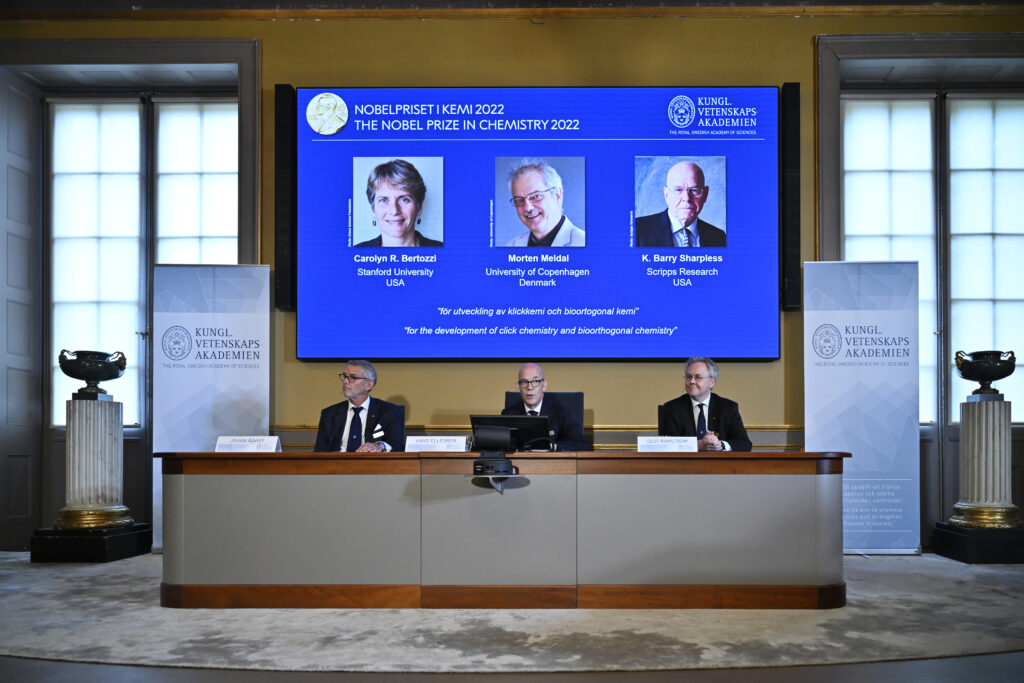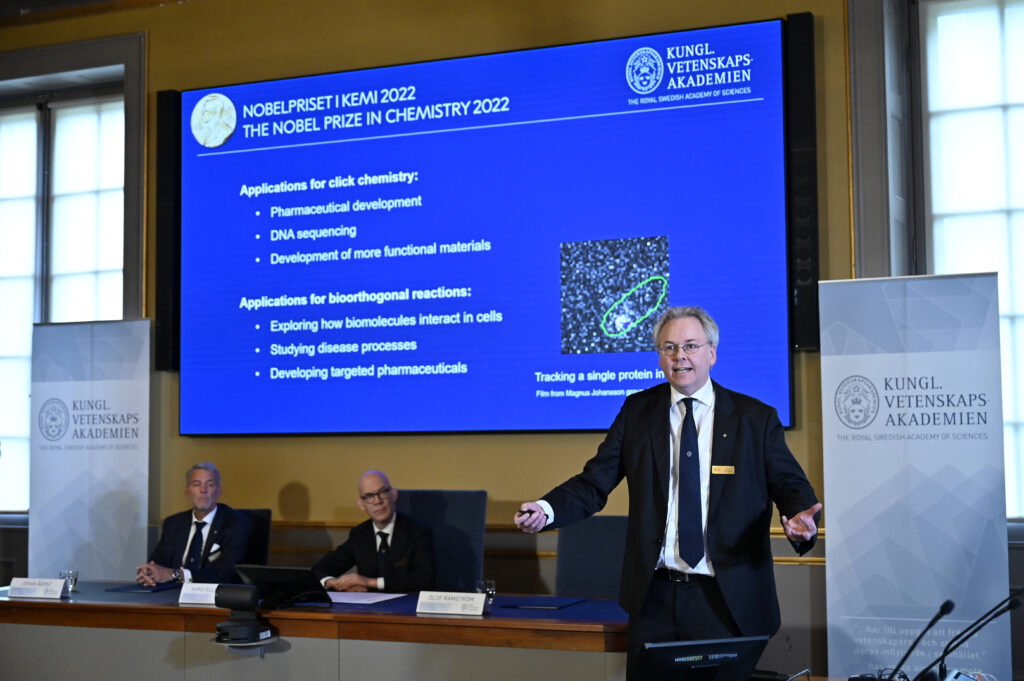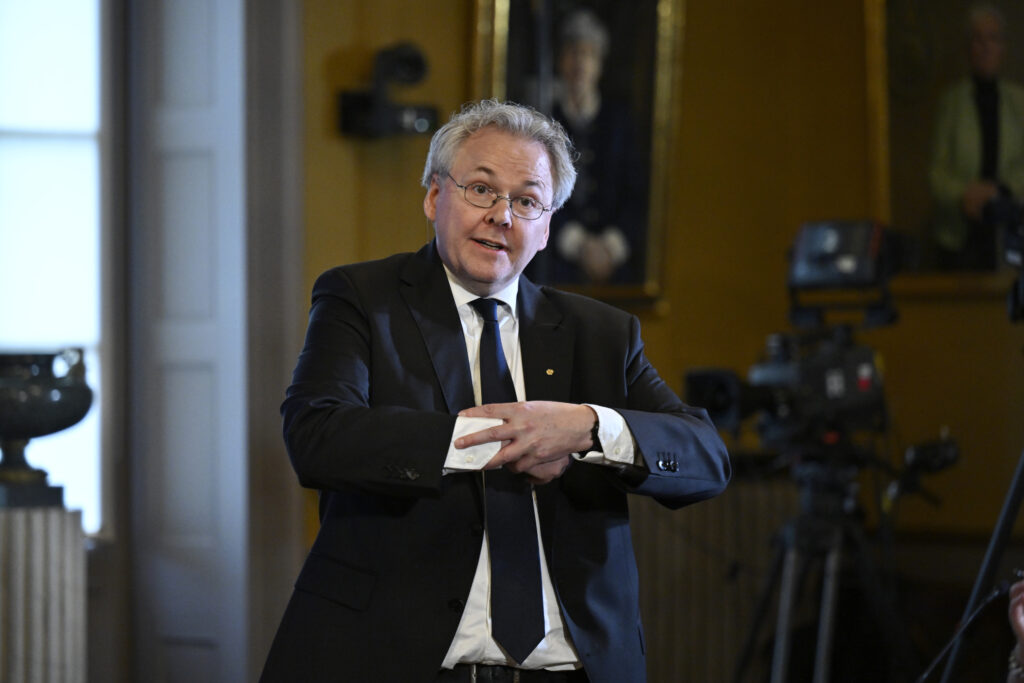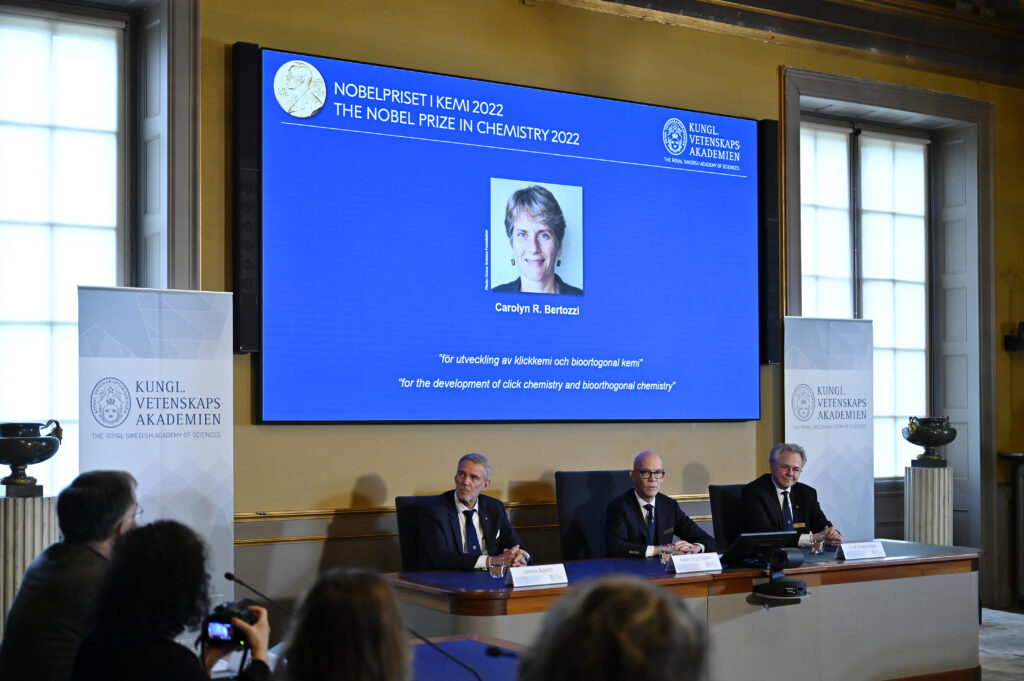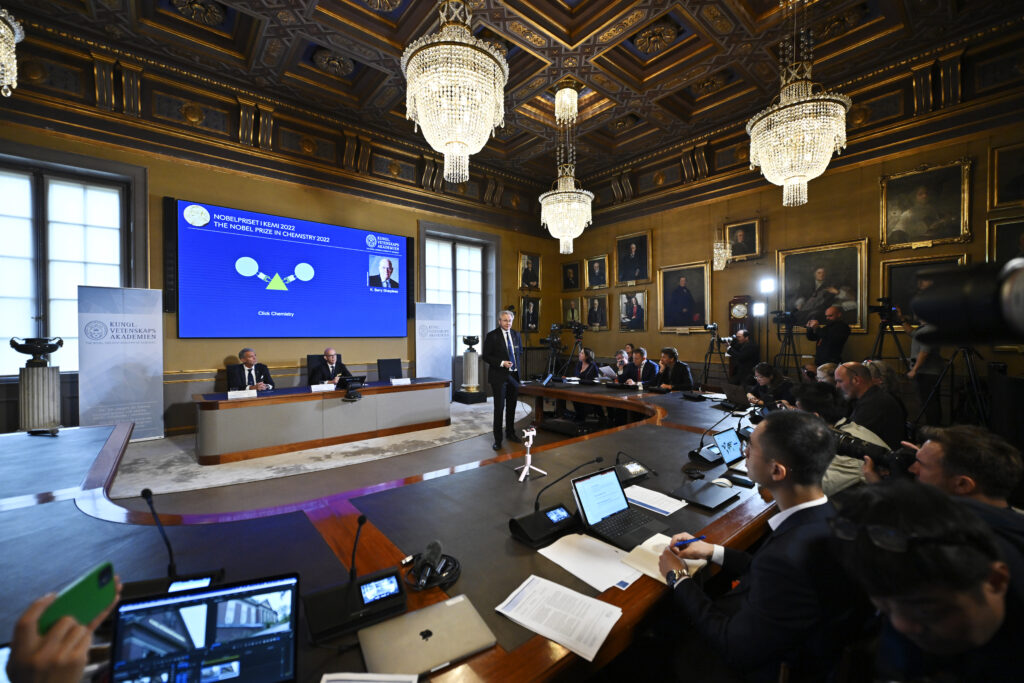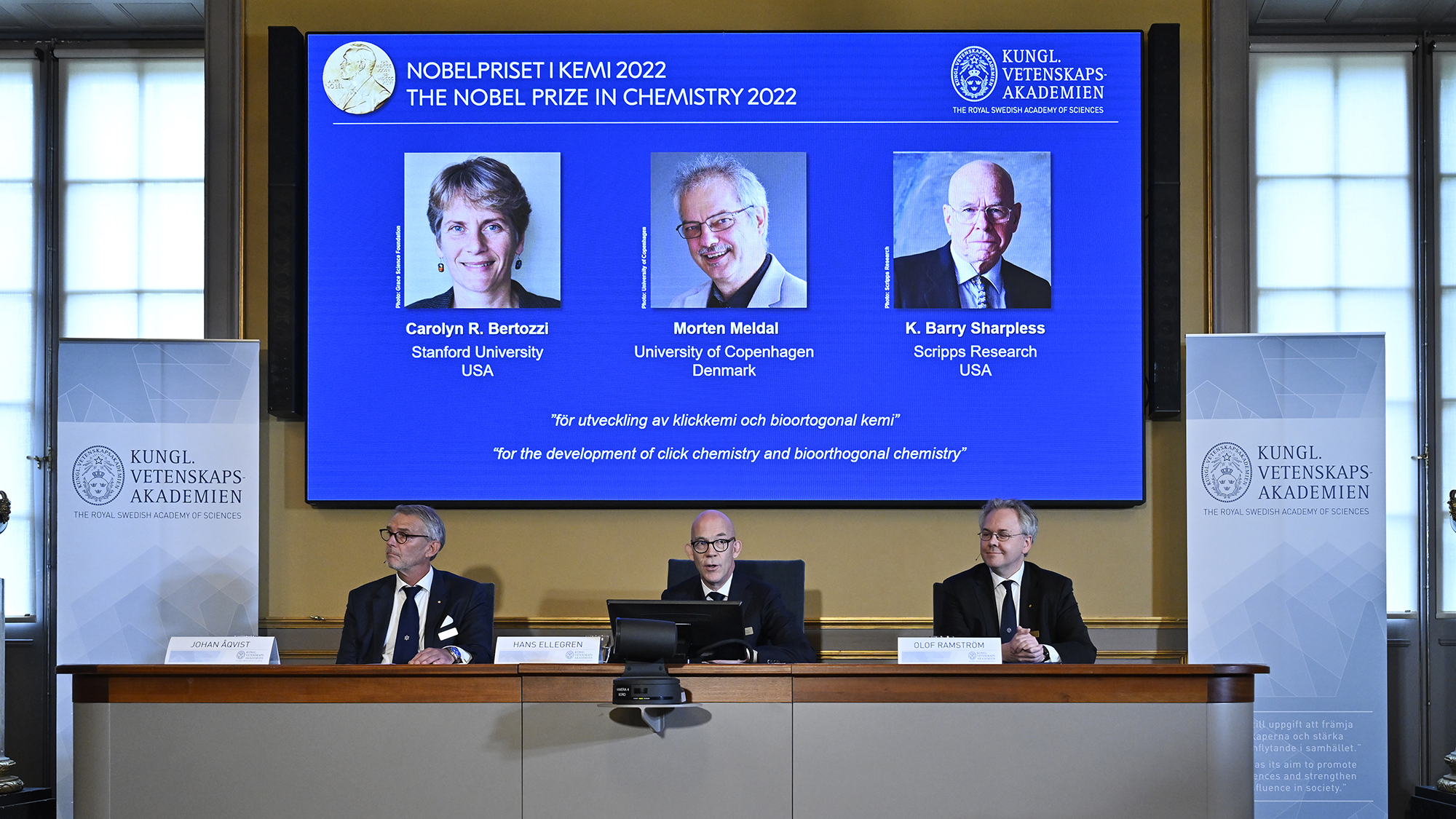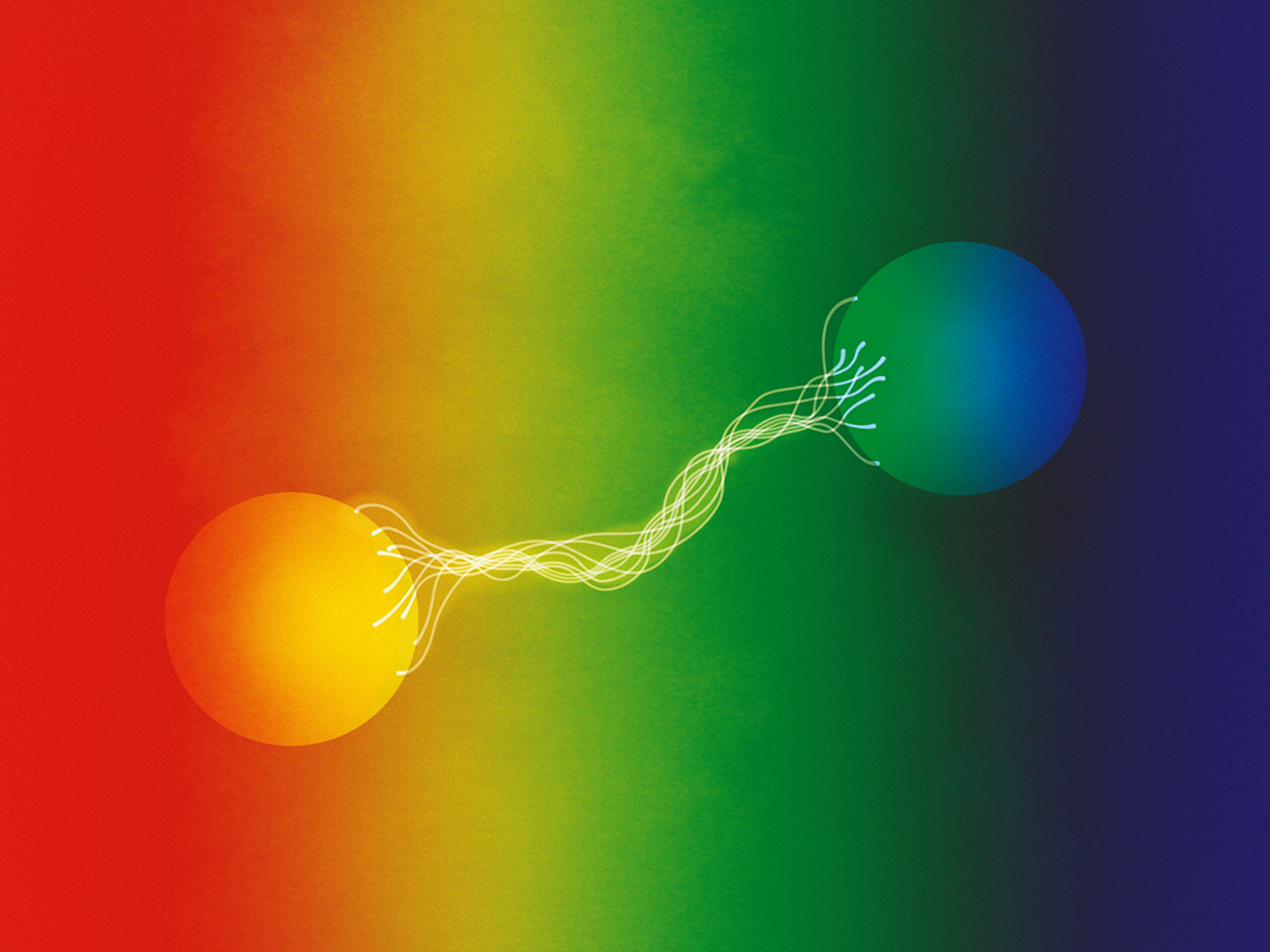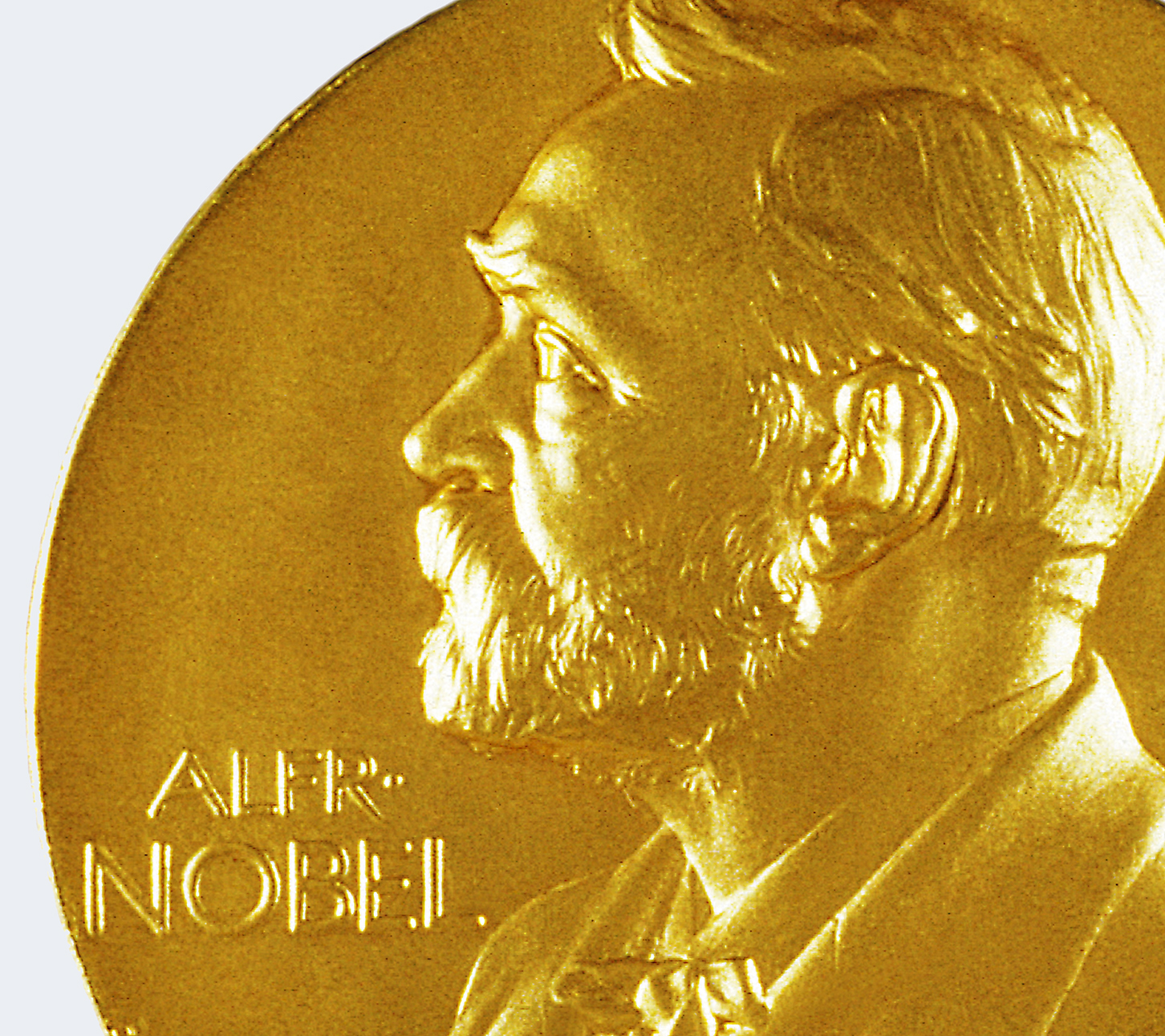The Royal Swedish Academy of Sciences has decided to award the Nobel Prize in Chemistry 2022 to
Carolyn R. Bertozzi, Stanford University, CA, USA and Howard Hughes Medical Institute, USA,
Morten Meldal, University of Copenhagen, Denmark and
K. Barry Sharpless, Scripps Research, La Jolla, CA, USA.
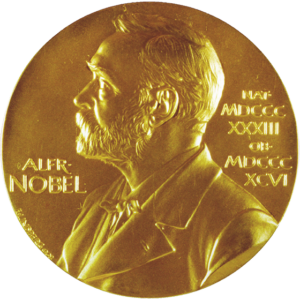 The Nobel Prize in Chemistry 2022 is about making difficult processes easier. Barry Sharpless and Morten Meldal have laid the foundation for a functional form of chemistry – click chemistry – in which molecular building blocks snap together quickly and efficiently. Carolyn Bertozzi has taken click chemistry to a new dimension and started utilising it in living organisms.
The Nobel Prize in Chemistry 2022 is about making difficult processes easier. Barry Sharpless and Morten Meldal have laid the foundation for a functional form of chemistry – click chemistry – in which molecular building blocks snap together quickly and efficiently. Carolyn Bertozzi has taken click chemistry to a new dimension and started utilising it in living organisms.
Chemists have long been driven by the desire to build increasingly complicated molecules. In pharmaceutical research, this has often involved artificially recreating natural molecules with medicinal properties. This has led to many admirable molecular constructions, but these are generally time consuming and very expensive to produce.
“This year’s Prize in Chemistry deals with not overcomplicating matters, instead working with what is easy and simple. Functional molecules can be built even by taking a straightforward route,” says Johan Åqvist, Chair of the Nobel Committee for Chemistry.
Barry Sharpless – who is now being awarded his second Nobel Prize in Chemistry – started the ball rolling. Around the year 2000, he coined the concept of click chemistry, which is a form of simple and reliable chemistry, where reactions occur quickly and unwanted by-products are avoided.
Shortly afterwards, Morten Meldal and Barry Sharpless – independently of each other – presented what is now the crown jewel of click chemistry: the copper catalysed azide-alkyne cycloaddition. This is an elegant and efficient chemical reaction that is now in widespread use. Among many other uses, it is utilised in the development of pharmaceuticals, for mapping DNA and creating materials that are more fit for purpose.
Carolyn Bertozzi took click chemistry to a new level. To map important but elusive biomolecules on the surface of cells – glycans – she developed click reactions that work inside living organisms. Her bioorthogonal reactions take place without disrupting the normal chemistry of the cell.
These reactions are now used globally to explore cells and track biological processes. Using bioorthogonal reactions, researchers have improved the targeting of cancer pharmaceuticals, which are now being tested in clinical trials.
Click chemistry and bioorthogonal reactions have taken chemistry into the era of functionalism. This is bringing the greatest benefit to humankind.
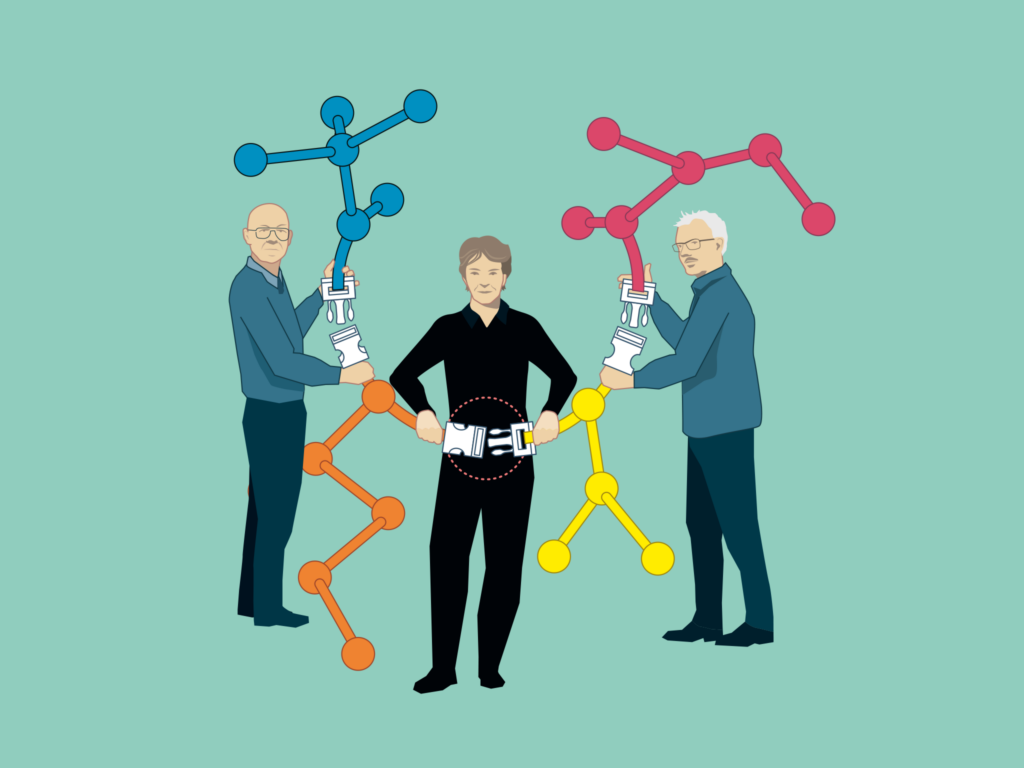
Laureates
Carolyn R. Bertozzi, born 1966 in USA. PhD 1993 from UC Berkeley, CA, USA. Anne T. and Robert M. Bass Professor at Stanford University, CA, USA and Investigator, Howard Hughes Medical Institute, USA.
Carolyn Bertozzi, Stanford University
Morten Meldal, born 1954 in Denmark. PhD 1986 from Technical University of Denmark, Lyngby, Denmark. Professor at University of Copenhagen, Denmark.
Morten Meldal, University of Copenhagen
K. Barry Sharpless, born 1941 in Philadelphia, PA, USA. PhD 1968 from Stanford University, CA, USA. W. M. Keck Professor at Scripps Research, La Jolla, CA, USA.
K. Barry Sharpless, Scripps Research
Prize amount: 10 million Swedish kronor, to be shared equally between the laureates.
Documents
The illustrations are free to use for non-commercial, editorial or academic purposes. Attribute “©Johan Jarnestad/The Royal Swedish Academy of Sciences”.
Contact
Press contact
Eva Nevelius, Press Secretary, The Royal Swedish Academy of Sciences
+46 70 878 67 63, eva.nevelius@kva.se
Experts
Olof Ramström, the Nobel Committe for Chemistry, The Royal Swedish Academy of Sciences
+46 70 433 42 60, ramstrom@protonmail.com
Read more about the Nobel Prize
The official Nobel Prize website
The Royal Swedish Academy of Sciences, founded in 1739, is an independent organisation whose overall objective is to promote the sciences and strengthen their influence in society. The Academy takes special responsibility for the natural sciences and mathematics, but endeavours to promote the exchange of ideas between various disciplines.
Nobel Prize® is a registered trademark of the Nobel Foundation.
Photos from the press conference
